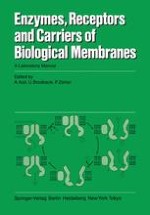This manual follows at a distance of 3 years the previous one entitled Mem brane Proteins, and, like its predecessor, it is the result of an International Advanced Course sponsored by FEBS, SKMB and SNG, which was held in Bern in September 1983. The experiments offered to the students in the course had to be largely up· dated or chosen from new areas of membrane research, because of the sub stantial and rapid development of the field. Using the protocols of the course, the participants (graduate students, postdoctoral fellows and also senior scientists), in most cases not at all ex pert in biomembrane research, were able to repeat all the experiments suc cessfully. Those few protocols which for some reason did not fulfill the role we expected were modified. These protocols have now been collected in this manual, which we are able to offer to a number of biology, biochemistry and biophysics laborato ries, hoping that the selected number of methods which have been success fully used during the Advanced Course may be useful to them. This manual is also intented for teachers of practical classes, who may use it as a text book and as source of selected references, collected not in the library, but in the laboratory, from the notebooks of the young researchers who have contributed so much to the success of the Course.
